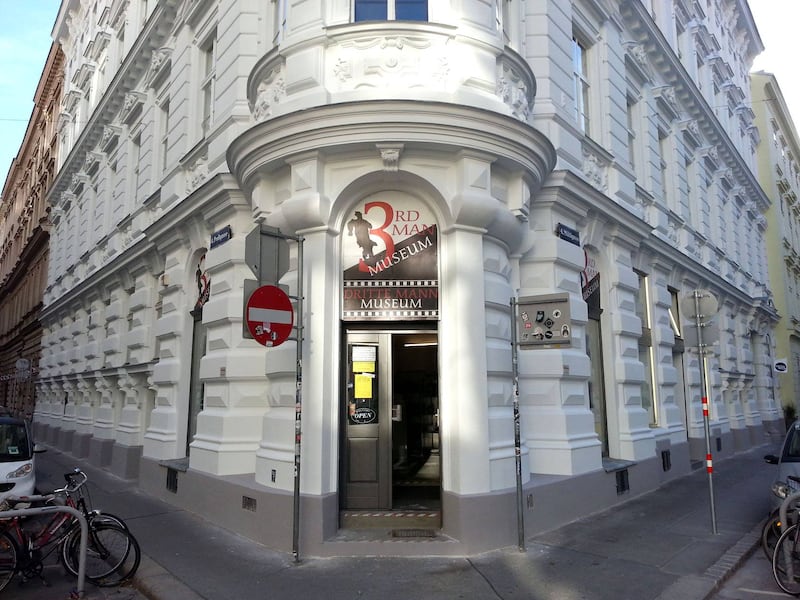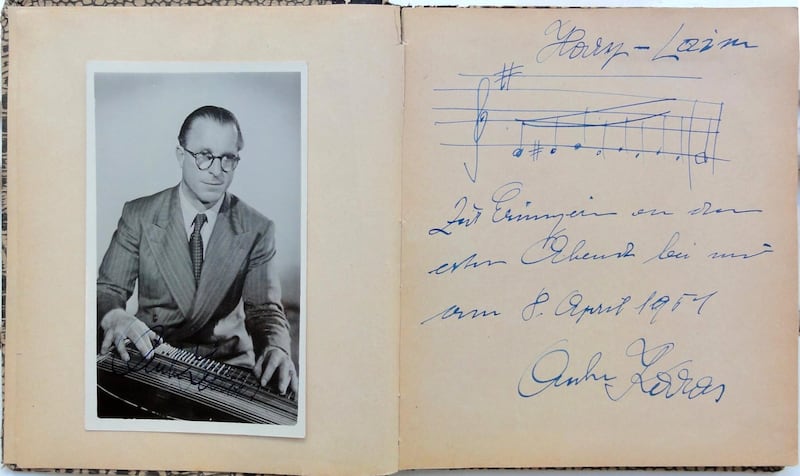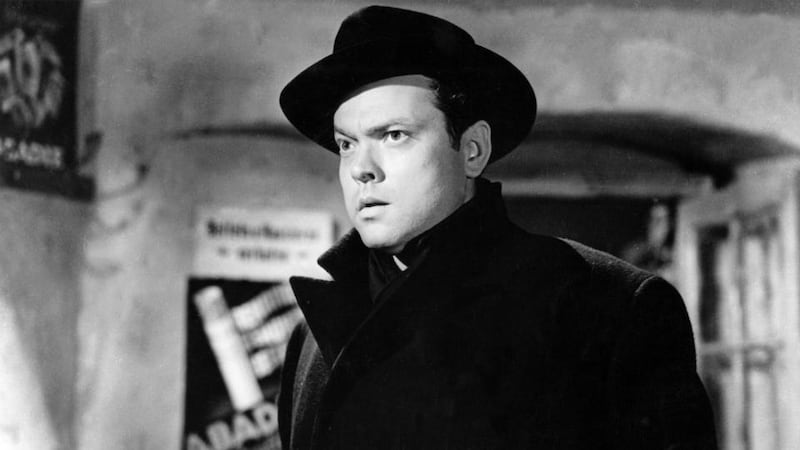Walking around modern Vienna, with its largely pristine streets and beautiful architecture, it can be hard to reconcile the world’s “most liveable city” with the dark broken city of Graham Greene’s film noir classic The Third Man. But even Greene himself wrote that the Vienna of The Third Man had “already disappeared to a great extent when I went back with [director] Carol Reed three months after I had done the story”.
However, the presence of the film, voted in 1999 the greatest British film of all time by the British Film Institute, can certainly be felt by visitors, with walking tours around old cobbled streets or, for the truly enthusiastic, a trip into the sewers to smell where Harry Lime met his fate.
In an innocuous side street down from Karlskirche lies something altogether more unique. The Third Man Museum, which only opens for a couple of hours a week, is the passion project of an Austrian couple, Gerhard Strassgschwandtner and Karin Höfler, who have spent years putting together a quite extraordinary collection of memorabilia from the movie, filmed 75 years ago this autumn.
Greene’s tale, written for the film and later published as a novella, tells the story of Rollo Martins, a philandering writer of pulp westerns who travels to Vienna on the invitation of his old school friend Lime, partly to escape the fallout of his latest tryst, “the Dublin incident”. Upon arrival, Martins discovers Lime has died in a car crash but soon begins to grow suspicious of this narrative and the mysterious “third man” who was at scene. Martins’s investigation brings him close to “Harry’s girl” and leaves a murder in its wake before, as Roger Ebert put it, Orson Welles makes “the most famous entrance in the history of the movies”.
READ MORE

The theme tune by Anton Karas, who was discovered by Reed and Greene playing the zither for tips in Viennese wineries, became an international sensation. One exhibit at the museum highlights its remarkable reach in Japan, with a version of the Harry Lime theme being played at train stations in Tokyo and Osaka every day. The owners acquired Karas’s zither and much of his collection of photographs from his own winery, including a poster promoting a Southport concert by the Zither Man, supported by a little-known duo called Morecambe and Wise.

The walls of the museum are covered with film posters from around the world, with more than 65 in one room alone. It even has a clip from a Croatian remake of the film, Treca zena, in which the two main characters are women.
While it proved an instant international hit, it’s not terribly surprising that the film wasn’t immediately popular in Vienna given the dire situation in the city in the aftermath of the war. The final rooms of the museum focus on the lives of people living there under the occupation by the Allied powers. It carries newspaper clippings featuring interviews with all manner of people who lived in the city at the time, from foreign soldiers, to former Hitler Youth members and those who were persecuted under the annexed Anschluss state.
Its main focus is the deprivation experienced in the city, in a period when crops failed and many lived on a “near-starvation diet” in an environment where a black market in penicillin was able to flourish. Penicillin was diluted so that more of it could be sold, effectively rendering some medicine useless and fatal.
Care packages from the US kept many afloat until the US-funded Marshall Plan in the late 1940s helped start a slow rebuild towards the re-establishment of independence in 1955.
It has been often posited that British intelligence officer and notorious Soviet Union double agent Kim Philby was the model for Lime, especially given Greene was widely believed to have worked for MI5 himself, at a time when Philby would have been his supervisor.
A menacing and charming figure depending on the needs of the situation, Lime’s speech looking down from the Riesenrad ferris wheel, justifying his racket in diluted penicillin by how many people – or “dots” – in the square below “you could afford to spare”, exemplifies the depths to which some in the four-power occupation were willing to stoop.

In 1950, Greene wrote in a preface to the novella: “Reality, in fact, was only a background to a fairy tale; none the less, the story of the penicillin racket is based on a truth . . . The other day in London a surgeon took two friends to see the film. He was surprised to find them subdued and depressed by a picture he had himself enjoyed. They then told him that at the end of the war when they were with the Royal Air Force they had themselves sold penicillin in Vienna. The possible consequences of their act had never before occurred to them.”
















